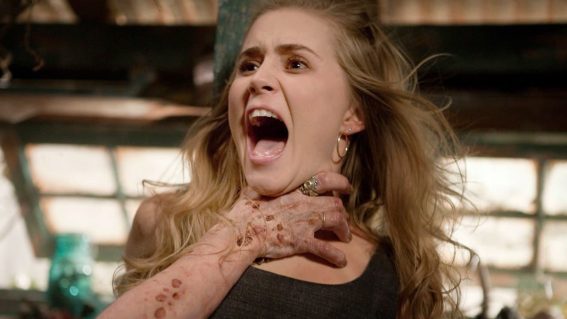Retrospective: Tucker and Dale Vs Evil flips the horror script by making our preconceptions the villain
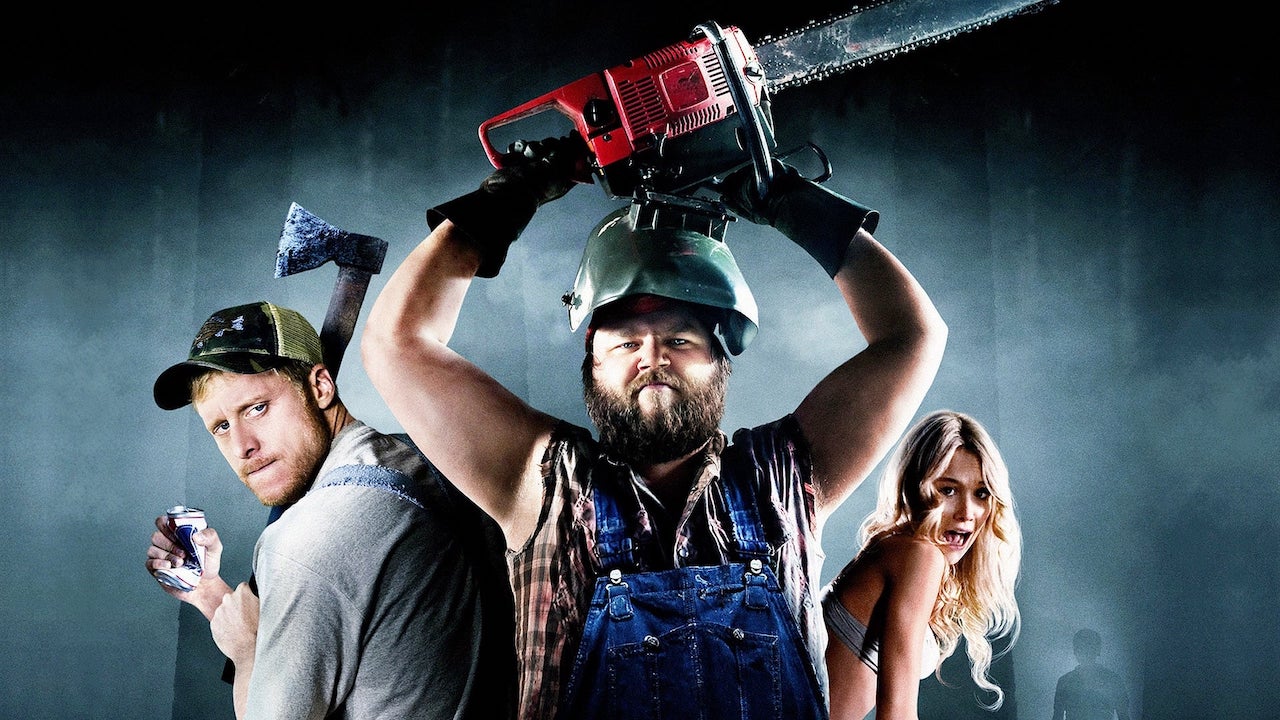
Sometimes death just happens, and our horror-movie-fuelled imaginations do the rest. Luke Buckmaster highlights the laughs and stereotype-flipping scares of Tucker and Dale Vs Evil.
Tucker and Dale vs Evil
Is it possible to get killed by a preconception? Fatally attacked by a form of prejudice? Impossible, you say: biases and bigotries cannot literally, physically hurt people. And yet Tucker and Dale vs Evil begs to differ. The 2011 horror-comedy rolls out archetypal slasher movie characters: namely, attractive university students who go away for the weekend, bringing beer and doobies with them, gruesome death not far behind.
But the “bad guy” is something else: a slanted way of seeing the world; a series of biases rooted in socio-economic divide, and informed by countless pop culture representations director Eli Craig rejects and satirizes.
The titular characters—two sweet, harmless hillbillies—unintentionally scare the bejeezus out of a bunch of pretty metropolitans, who venture into their neck of the woods and mistake them for Deliverance-style mountain men or Leatherface-type psychopaths. Early on the city slickers stop at a grimy general store, where portly oaf Dale (Tyler Labine) is taken in by Allison (Katrina Bowden) and given a pep talk by his best friend Tucker (Alan Tudyk): “she’s just human, why don’t you go over and talk to her?”
This is one of many moments, cleverly scripted by Craig and co-writer Morgan Jurgenson, granting the viewer a perspective with which to observe the misinterpretation of an innocuous action. A terribly nervous Dale, not helping his aesthetic appeal by carrying a large scythe, attempts small talk but can’t get the words out, babbling and giggling and sounding weird. From the POV of the college kids, he’s a scary looking dude holding a weapon and laughing maniacally. Instead of assuming the best, and treating Dale with decency, they recoil in horror—setting in motion a process that ultimately leads to their own demise.
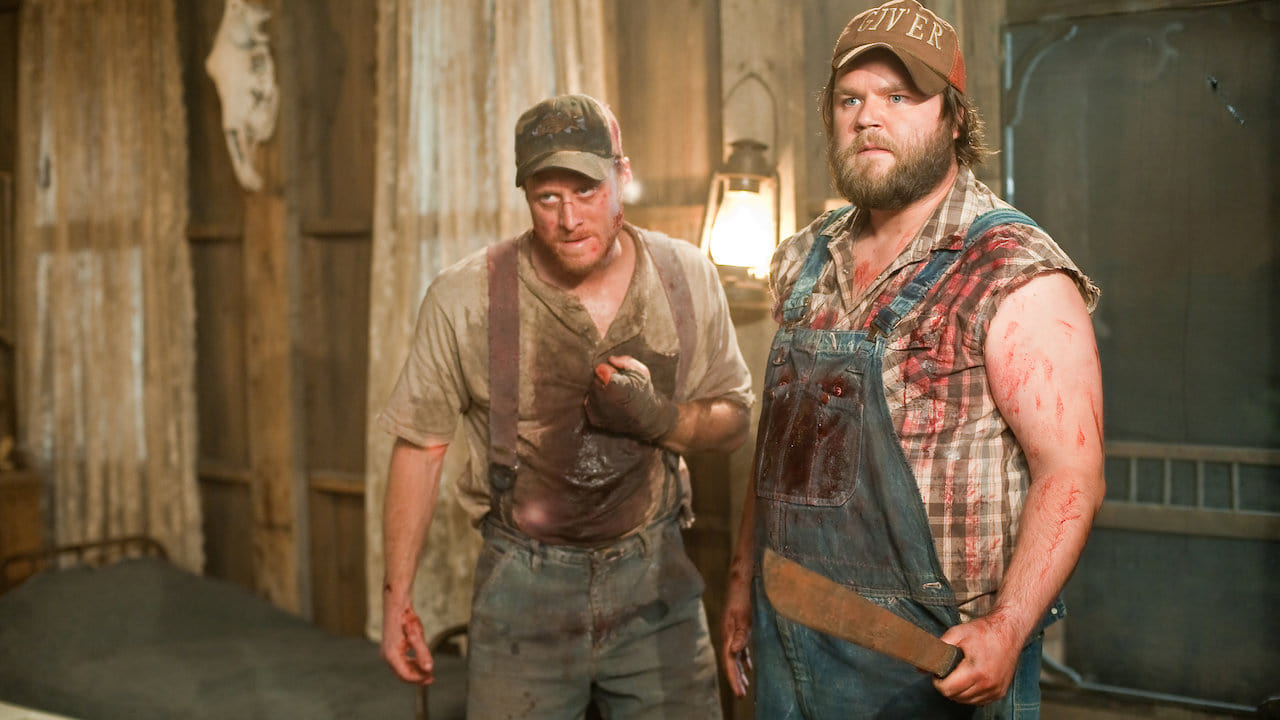
To illustrate how this grisly cosmic justice unfolds, it’s necessary to divulge details of the first death (skip to the next paragraph if you want to go in cold). Having drawn the short straw, one of the city clickers, Mitch (Adam Beauchesne), approaches Tucker and Dale’s cabin, mistakenly believing they’re holding somebody prisoner. Tucker is going about his business outside, accidentally slicing into a beehive while chopping up a tree trunk.
Blinded and hysterical by the swarm of attacking insects, Tucker waves the chainsaw madly about and attempts to run away—unintentionally barrelling towards Mitch, who sees a chainsaw-wielding maniac coming right at him and splits, believing he’s running for his life. In fact he’s about to action his death—running right into a long, sharp tree branch that impales and kills him.
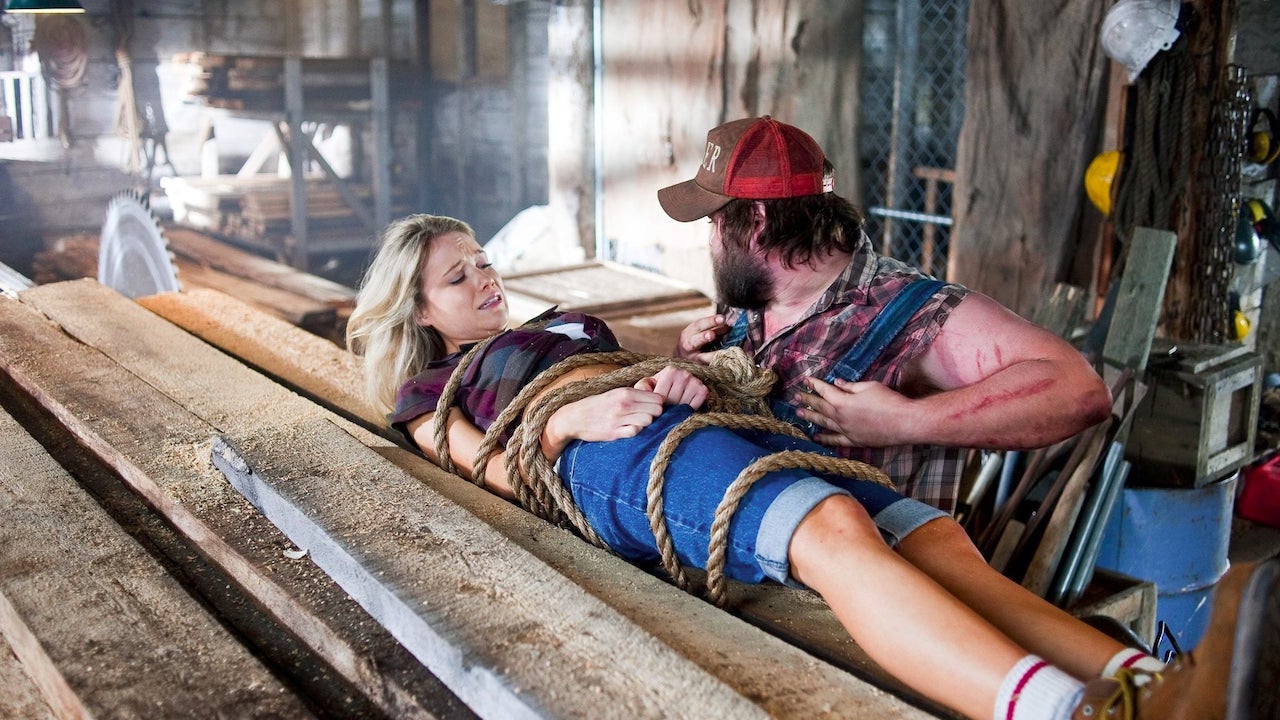
Other characters exit the mortal coil in conceptually similar scenarios, offed by a combination of unfair assumptions and freakish bad luck. The latter is also a key part of the jet black Irish comedy A Film with Me In It, in which the “villain” is a series of incredibly unlikely accidents that occur in close succession inside a crummy rundown flat. A chandelier takes out the landlord, for instance, then another person dies after mounting a wobbly stool.
The deaths keep a-comin’, leading the tenant (Mark Doherty) and his best friend (Dylan Moran) to decide to “cover their tracks”, even though they didn’t do anything—figuring no person would believe that so many grotesque accidents would occur in a row.
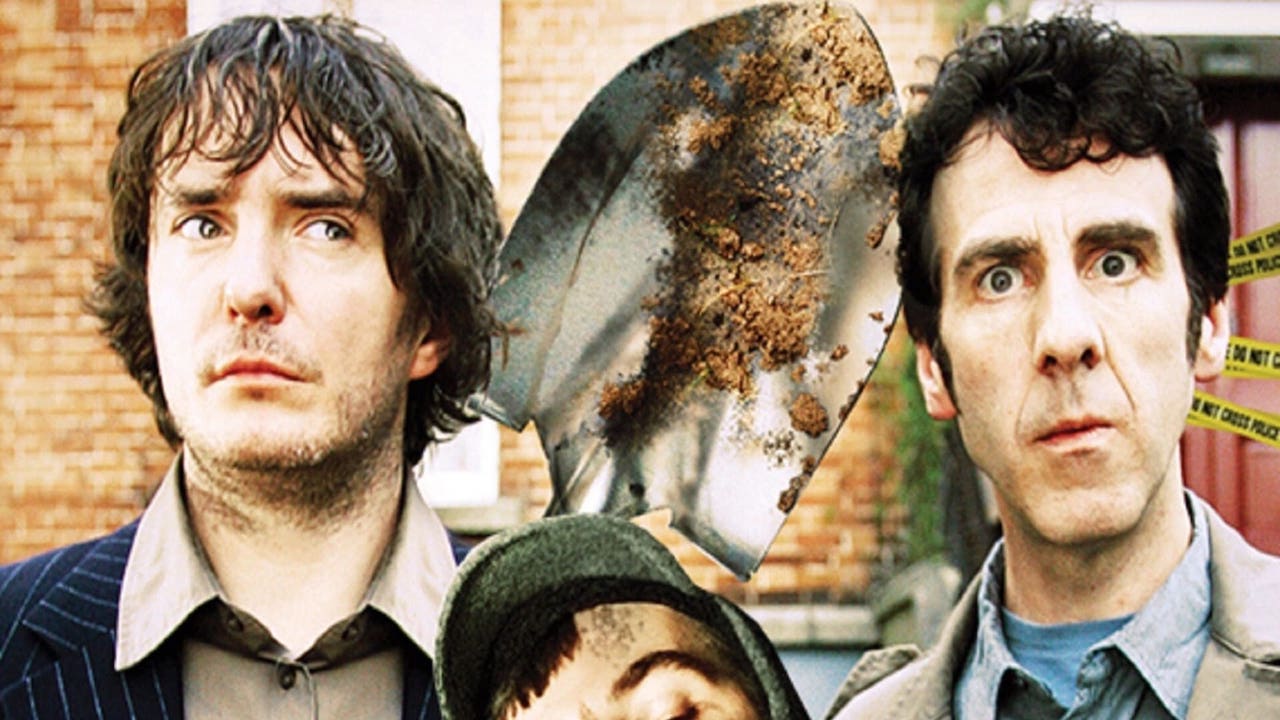
Another memorably vague “villain” drifts around the hazy, otherworldly atmosphere of Amy Seimetz’ She Dies Tomorrow, in that the malevolent force is a feeling. A depressed woman (Kate Lyn Sheil) is convinced she’s going to die the next day; her friend tells her she’s crazy before she experiences the same sensation. There’s also the Final Destination movies (I’m a fan!), which follow characters who cheat fate—only to be killed in a series of unlikely, A Film With Me In It-esque accidents, Death leveling the scales via creative use of elements such as spaghetti and a swimming pool drain.
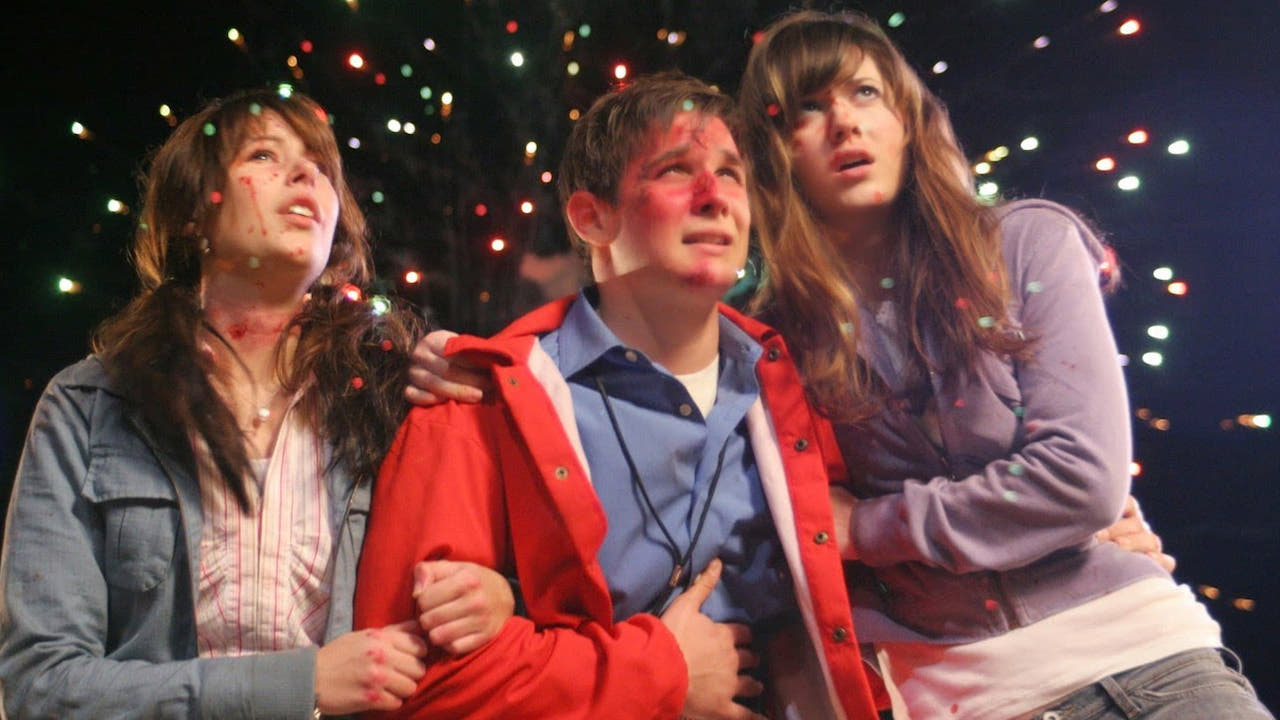
Tucker and Dale vs Evil coyly extends what could have been an exhausting single joke premise, combining pulpy grotesquery with social commentary on rural-urban divide and the animosities therein. Craig loses his nerve a little in the final act, ushering in a more conventional baddie, albeit one that still lets him rearrange (without giving too much away) several of the “hillbilly horrors” tropes.
This villain may be flesh and blood (an unusual thing to criticize a horror movie for) but Craig uses them to double down on the aforementioned commentary, emphasizing that his film—while zany and manic—is actually about something. As it turns out, prejudices and preconceptions can kill.





